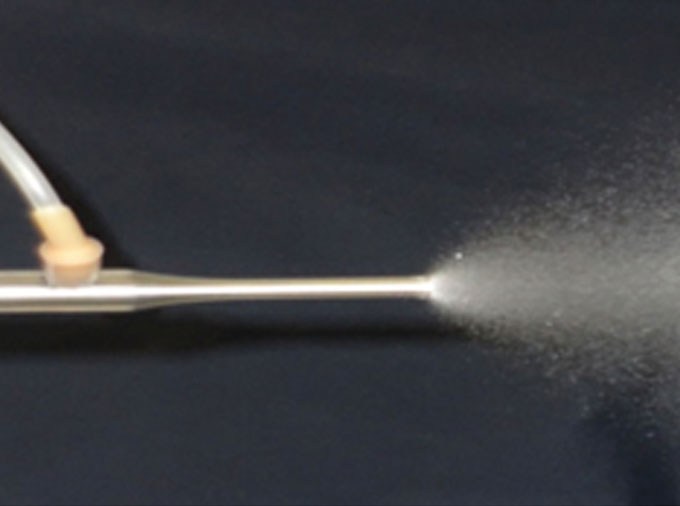Ultrasonic Atomiser
Manufacturers & Exporters
The Ultrasonic Atomiser uses Ultrasonic energy (Low/Medium) to generate low velocity, gentle spray unlike the conventional atomizing nozzle which depends on pressure & high velocity motion to shear a fluid into small droplets. The fluid (Liquid) is dispensed to the atomizing probe by either gravity or low-pressure small pumps & atomize continuously or intermittently as per requirement. The sample can be accurately delivered to the target area & over spray is virtually eliminated thus, resulting in material savings. The atomizer can runs continuously or be programmed to pulse On & Off.
The rate of atomization depends within limits solely on the volume that is been delivered onto the atomizing surface & the frequency it operates. Typically higher the frequency, the lower the processing capability. With water the average droplet size is 50 microns and the minimum sample volume that can be effectively atomized is 2µl/sec. To optimize atomization, the viscosity below 50cps & solid concentration must be below 30%.
The atomization of liquids containing long-chained polymer molecules is problematic, even in diluted form, due to highly cohesive nature of the material. Drop size is primarily a function of frequency, and the higher the frequency, the smaller the drop diameter, E.g. : frequency 20 kHz the drop size is 100 microns & frequency is 40 KHz the drop size is 50 microns.
How does it works?
The Ultrasonic power supply converts 50/60 Hz to frequency electrical energy. This electrical energy is transmitted to the piezoelectric transducer within the converter, where it is changed to mechanical vibrations. The ultrasonic vibrations are intensified by the probe and focused at the tip where the atomization takes place. The liquid travels through the probe, and spreads out as a thin film on the atomizing surface. The oscillating tip disintegrates the liquid into micro-droplets, and ejects them to form a gentle, low velocity spray.
Summary of Features of Ultrasonic Atomizer
- From micro-litres to litres – continuous or intermittent
- Dispenses material with virtually no over spray
- Pressure-less atomization – low velocity mist
- Low cost atomization probe replacement
- Minimal atmospheric contamination
- Virtually unclog gable
- Programmable operation
- Multiple probe operation
- No heating / No temperature rise
Typical Applications
- Increase of humidity level
- Coating non-woven fabric, paper, etc…
- Laboratory spray drying
- Injection moisture into a gas stream
- Applying minute amount of oil, fragrance or flavour onto a product
- Injecting small volume of reagents into a reactor
Copyright © 2017 Life Care Equipments Private Limited Mumbai India SEO by Arsh Infosystems: SEO Company Mumbai


